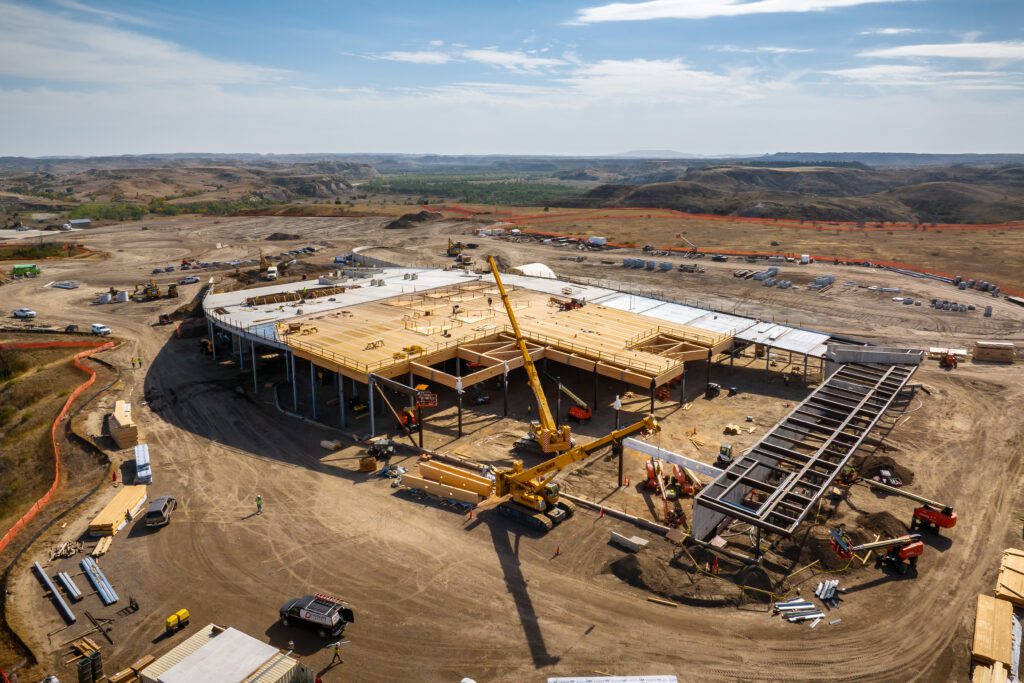Since the emergence of mass timber, publications have been pushing headlines that suggest the insurance industry is hesitant to get behind this new construction material.
But this couldn’t be further from the truth.
As construction enters a new era of innovation and efficiency, insurance companies have become acutely aware of the need to roll with the changes and prepare for tomorrow’s processes.
As such, the insurance industry has focused its eyes and ears on mass timber, learning about its properties and what it means for construction going forward — and the outlook is more promising than ever before.

High Line Timber Bridge, New York, NY
Spinning the Narrative: Insurers Make the Push
Mass timber is growing rapidly with its demand projected to double every year until 2030. The insurance industry is no stranger to this phenomenon. As mass timber becomes more prevalent across Europe, Canada, and now the US, insurers are adapting their policies to address the myths surrounding wood as a building material. Despite this, the media frequently portrays mass timber construction as fraught with difficulties, claiming that such projects are littered with approval complications.
While challenges exist within the mass timber insurance process, this is true with any construction material. Michael Bruch, Global Head of Risk Consulting Advisory Services at Allianz Commercial, states: “In any industry, deployment of new materials or processes can result in new risk scenarios… as well as bringing benefits, and mass timber is no different.” The key difference is that mass timber is newer to the market and regulatory landscape, requiring more time and data to establish comprehensive standards and practices.
Fortunately, ongoing research and advancements in mass timber technology are disproving these long-held misconceptions, helping to streamline approvals and demonstrate the material’s advanced safety and sustainability.
Putting an End to Mass Timber Myths
The misinformed claims surrounding mass timber often concern areas such as fire safety, structural integrity, and long-term durability, creating a perception of higher risk and causing setbacks in promoting its wider reputation.
Let’s look into these further.


The Flaming Elephant in the Room: Mass Timber and Fire Resistance
According to Allianz, fire is the most costly cause of construction and engineering losses, accounting for approximately 27% of assessed claims over a five-year period.
Although wood is typically associated with fire hazards, mass timber has actually been shown to outperform traditional materials like steel and concrete when subject to fire.
Fundamentally different from standard wood, mass timber:
- Burns slowly: If mass timber catches fire, the material combusts predictably at a slow rate, generating more response time and minimizing spread.
- Tolerates heat intensity: Mass timber products like cross-laminated timber (CLT) are composed of thick cross-sections, creating a substantial mass that resists heat penetration for prolonged periods of time.
- Chars on the surface: By forming a protective layer of char, mass timber reduces the spread of fire and inhibits flames from damaging deeper structural components.
- Maintains stature: Mass timber components can be strategically designed to ensure the load-carrying capacity remains uncompromised in the event of a fire, reducing the potential for collateral damage.
The fire-resistant properties of mass timber are only advancing as engineers and architects develop new methods to enhance the performance of this material in fire scenarios, such as fire-retardant coatings and treatments, as well as non-combustible encasings.

The Question of Structural Integrity and Durability
Another interesting statistic from Allianz shows that natural catastrophes are the second-most expensive cause of construction claims. Extreme forces, such as tornadoes and hurricanes, can seriously compromise the integral elements of any structure, including columns, beams and panels. Unfortunately, the media is rife with myths that cast doubt on wood’s capacity to cope with seismic resistance.
Research tells another story.
A 2024 study has shown that timber buildings are capable of withstanding the intense forces of nature. In a recent natural disaster simulation, a mass timber building was subjected to a 7.7-magnitude earthquake, performing better than its steel and concrete counterparts.
How is this possible? Unlike traditional materials, mass timber’s ductility allows it to absorb and disperse the generated energy, enabling it to bend without breaking. In addition, the lightweight material boasts an impressive strength-to-weight ratio, meaning it can endure seismic movements without its mass putting additional pressure on the building.
What Insurers Really Think
The insurance industry is currently undergoing a period of change where research is paramount to creating well-informed practices and policy developments for mass timber. By actively seeking out information to understand mass timber’s unique properties, insurers are developing a comprehensive knowledge base to assess its risks and benefits accurately.
Mass timber expert and Vice President of Projects and Construction at Mercer Mass Timber, Nick Milestone, believes insurers are well-tuned into mass timber, doing what they can to cut costs: “I’ve never seen such great traction from the insurance industry. It’s been phenomenal,” says Milestone. “It’s amazing to see insurers attend construction events like the International Mass Timber Conference. These events started with ideas and architects; now we’re down to the nitty-gritty of large-scale mass timber construction. Insurers have been fully on board with this, pushing for as much knowledge as possible to help sell it back to their funders and reduce premiums.”
Such active participation in conferences concerning the emergence of mass timber is a testament to insurers’ dedication to understanding and supporting this new building material. By immersing themselves in these events, insurers have become more educated about mass timber’s benefits and challenges, enabling them to craft more informed policies that reflect its true risk profile. Not only has this helped to reduce premiums, but it’s also fostered a collaborative environment where industry stakeholders work alongside mass timber experts to advance construction and promote its widespread adoption for modern, sustainable structures.

Google Borregas, Sunnyvale, CA
Paring Premiums: Mass Timber Insurance Providers are Listening and Learning
As is the case with any pioneering technology, it’s all about education. By promoting mass timber’s impressive fire resistance, durability, and resilience, the construction industry can overcome its skepticism and build overall confidence in the sustainable material, contributing to more realistic and affordable premiums for developers and project handlers.
Supporting this movement further, modern building codes and regulations are being updated to incorporate the latest findings, ensuring that mass timber structures meet stringent safety standards. As mass timber’s popularity continues to grow, it is crucial for stakeholders to dispel these myths and contribute to a brighter, more sustainable sector.

